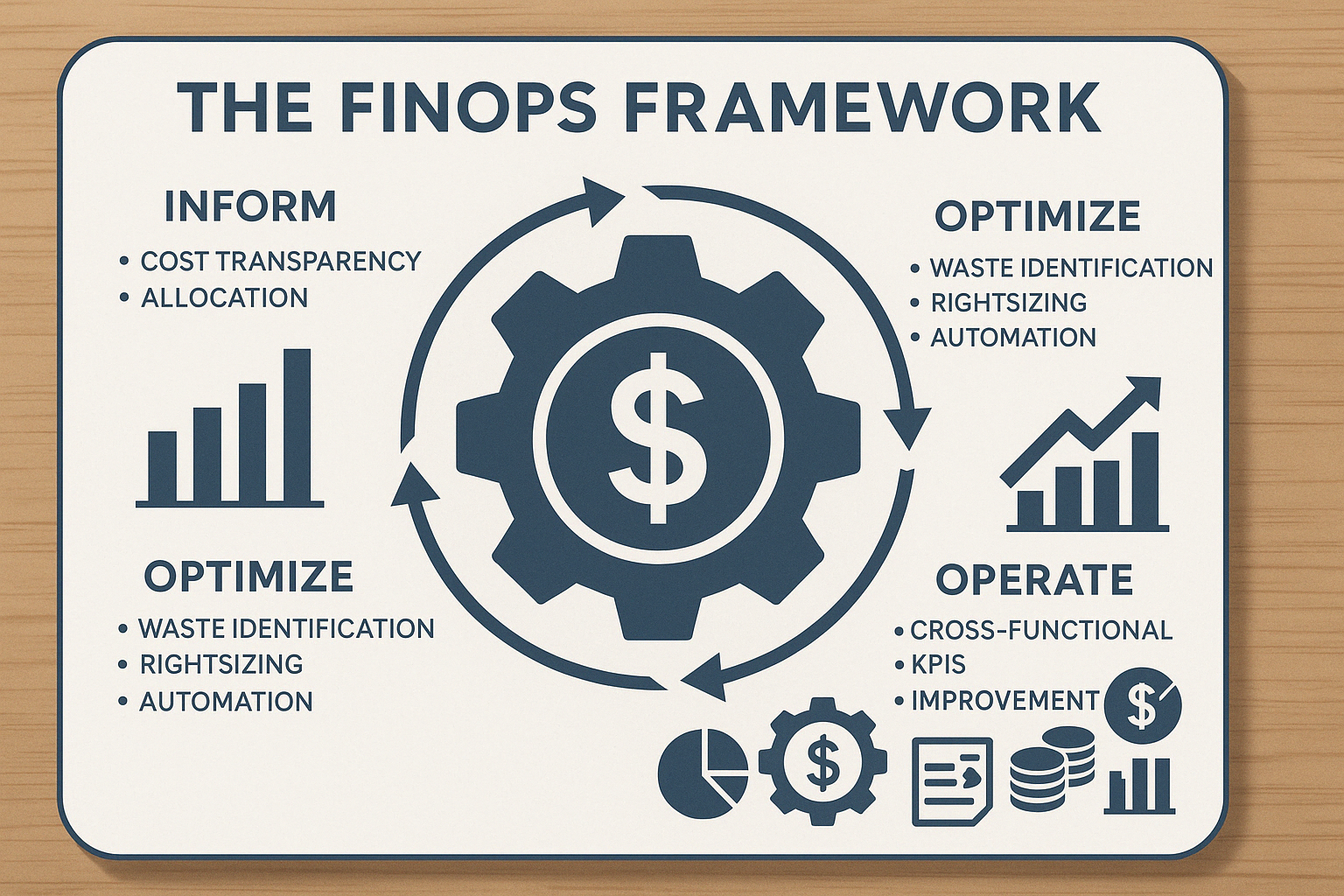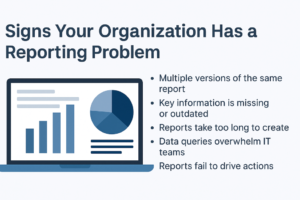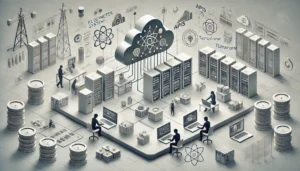Introduction
In the age of cloud computing, where infrastructure is consumed as a utility, organizations are grappling with balancing innovation velocity and financial accountability. Traditional IT budgeting and procurement models fall short in the cloud era, where costs are dynamic, usage-driven, and distributed across teams. This is where FinOps—a portmanteau of Finance and DevOps—comes in. It’s a cultural and operational practice that brings finance, engineering, and business teams together to manage cloud spend more effectively. The FinOps Framework provides a structured approach for enabling this collaboration and turning cloud investments into strategic assets.
The Cloud Cost Dilemma
One of the primary challenges that prompted the rise of FinOps is the lack of visibility and ownership over cloud costs. As teams autonomously deploy cloud resources, finance departments often struggle to understand what’s driving spend and how to control it. Engineering teams, on the other hand, are focused on speed and performance, not costs. Without a shared language and accountability, businesses frequently experience budget overruns, underutilized resources, and inefficient architectures. Additionally, the shift from capital expenditure (CapEx) to operational expenditure (OpEx) requires a fundamental rethinking of financial processes.
FinOps Framework
The FinOps Framework solves this by establishing a set of principles, capabilities, and phases that organizations can adopt to bring clarity, governance, and collaboration to cloud financial management. At its core, the framework encourages teams to Inform, Optimize, and Operate cloud spending through continuous feedback loops.
- Informing involves creating cost transparency and allocation mechanisms so teams understand what they’re spending and why.
- Optimization focuses on identifying waste, rightsizing resources, and implementing automation for efficiency.
- Operating emphasizes the need for cross-functional processes, KPIs, and continuous improvement cycles.
Implementation Steps
Step 1: Build Cost Visibility
The first step is building cost visibility, which means setting up tagging strategies, cost allocation rules, and dashboards that allow teams to see their consumption in real time. Visibility is foundational—it ensures that the right teams are aware of their cloud usage, costs, and trends. This enables fact-based conversations and paves the way for accountability.
Step 2: Establish Governance and Accountability
Once visibility is in place, governance policies and accountability models must be introduced. This often involves assigning cloud budgets to business units, product lines, or teams. Stakeholders begin to take ownership of their usage, guided by clear expectations and financial goals. Chargeback or showback models may also be introduced to reinforce this accountability.
Step 3: Drive Optimization Initiatives
With governance in place, the focus shifts to optimizing cloud usage. This includes identifying underutilized resources, resizing compute and storage services, and applying automation. Tools such as AWS Compute Optimizer, Azure Advisor, and GCP Recommender help teams find opportunities to reduce spend without compromising performance.
Step 4: Mature into a Continuous FinOps Operating Model
In the final stage, FinOps becomes embedded in daily operations. Business and engineering teams conduct regular cost reviews, collaborate on forecasts, and use unit economics (e.g., cost per transaction, per customer, per workload) to drive product and architectural decisions. FinOps becomes an ongoing, iterative practice that evolves with the organization’s cloud maturity.
Real-World Use Cases
Real-world examples underscore the value of FinOps. A large SaaS provider implemented the FinOps Framework and was able to reduce cloud waste by 30% within six months through visibility, automation, and chargeback mechanisms. Another enterprise used FinOps practices to align engineering incentives with cost goals, embedding cost-awareness into sprint reviews and OKRs. These changes not only saved money but also fostered a culture where cost accountability was shared across the organization, not relegated to finance teams alone.
Benefits Realized
The benefits realized from FinOps adoption go beyond cost savings. Organizations gain financial predictability, better forecasting, improved collaboration across departments, and faster time-to-market due to optimized cloud operations. FinOps also strengthens cloud governance, supports compliance requirements, and helps companies scale their cloud usage responsibly and sustainably.
Common Pitfalls
That said, common pitfalls include failing to get buy-in from engineering teams, treating FinOps as a finance-only initiative, or relying too heavily on tooling without building the cultural foundation. To avoid these traps, it’s crucial to establish executive sponsorship, foster a cross-functional FinOps team, and integrate cost accountability into existing workflows and agile ceremonies. Culture change is key—FinOps success depends on shared ownership and cross-functional participation.
Tools and Resources
To support FinOps adoption, several tools and platforms are available. These include native cloud provider tools like AWS Cost Explorer, Azure Cost Management, and GCP Billing Reports. More advanced capabilities can be found in third-party platforms like Apptio Cloudability, CloudHealth, Harness, and Kubecost. Additionally, the FinOps Foundation offers a wealth of resources, including certifications, training programs, maturity models, and a growing community of practitioners to accelerate learning and adoption.
Call to Action
The FinOps Framework provides a robust, scalable way to manage cloud finances in a world where technology and business are increasingly intertwined. By adopting FinOps, organizations can empower teams with the data and accountability needed to optimize cloud usage and drive better business outcomes. Whether you’re just starting or looking to mature your practice, now is the time to embrace FinOps as a strategic function.
Reach out to our team if you’re ready to build or scale your FinOps capabilities—we’re here to help turn your cloud spend into a competitive advantage.





